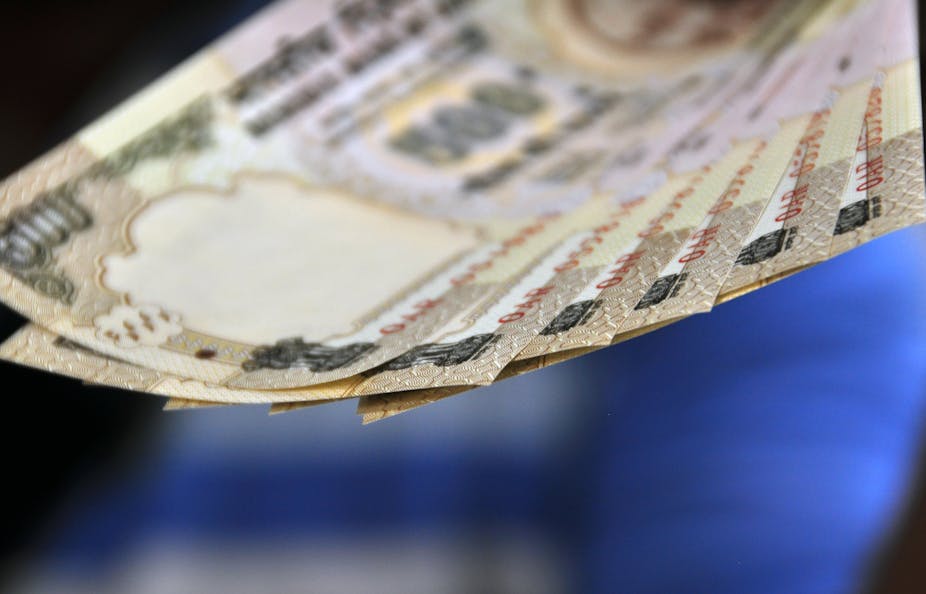The US debt crisis is over for now, but legislators have just kicked the can down the road. In this series on the US debt ceiling, academics from Australia, the UK and the US assess the lingering global implications.
At first glance, it might seem that the US’s big rivals in the emerging world — especially its ideological rivals China and Russia — would have taken pleasure in watching the US tie itself up in knots over the past few weeks.
It is very likely, however, that any such pleasure these rivals feel will be short-lived. The world is too interconnected and countries’ fates too intertwined for the negative fallout of government gridlock to stay local to the US alone. Countries such as China that depend heavily on trade, and especially trade with the US, will always experience the direct effect of any slowdown in the US economy.
The effect is less clear, however, on other emerging economies such as India that are less export-led but rely heavily on foreign direct and institutional investment for their growth. In fact, it is possible India could stand to gain from uncertainty in the US.
The past few months have been rough on India. Facing policy paralysis of its own, and a huge crisis in confidence among domestic and foreign investors on account of corruption scandals and bureaucratic caution in the face of Right to Information laws, the country’s growth has slowed to 4.5% from more than 7% in the last year or so. India has had such slowdowns in the past; however, analysts fear this latest may not be temporary. Rather, the concern is that the slowdown is driven both by structural impediments within the Indian economy as well as the economic situation in developed countries, especially the US.
The trouble with India
India faces three major structural impediments. First, the country has been plagued by coalition politics at the centre for some time. The current coalition, led by the Congress party, contains within it several regional parties with bases in Indian states such as West Bengal and Tamil Nadu. These regional parties, despite being minority members of the coalition, have been able to hold the majority party (the Congress) to ransom on several occasions over the last five years.
For instance, in November 2011 when the Congress dominated cabinet tried to push through a law allowing foreign multinationals to own a majority stake in multi-brand retail chains, the minority party from West Bengal threatened to pull out of the government in protest. Despite efforts to bring them on board, the cabinet blinked first and the ordinance was repealed, in the process thwarting the corporate investment that the government was hoping to stimulate.
Over the past five years, India has also been plagued by several high profile corruption scandals involving the auction of 2G cellphone spectrum licenses, the Commonwealth Games, and other large infrastructure projects. In the case of the 2G scandal, for instance, the Supreme Court annulled the results of the auction and required the whole process to start again. While this righted many wrongs, it proved costly and disruptive to the business of many telecommunications companies. And the whole episode served only to sow further uncertainty in the minds of investors and Indian and foreign companies alike.
Finally, the government has faced several major macroeconomic challenges: a large and growing current account deficit (India imports much of its oil and faces a huge energy bill), a large and growing fiscal deficit (thanks to liberal food and fuel subsidies), increasing inflation (and related high food prices), and finally, most recently, a fast weakening rupee.
All these problems seem to have come to a head in the past few months. While they may have been brewing earlier, these issues were somehow mitigated by the aftermath of the financial crisis in the west and the resulting policy of quantitative easing in the US and western Europe. The financial crisis meant that emerging economies such as India had looked like good investment destinations in 2009 to 2012. And quantitative easing meant that Western institutional investors had liquid assets that they were looking to invest, and emerging markets like India seemed like a good place to do so.
The future is uncertain
But as the US began to climb out of recession earlier this year, there were increasing signs from the Federal Reserve that it would begin to taper its earlier policy of quantitative easing. The resulting lack of liquidity in American financial institutions would mean these institutions had less money to invest in emerging markets, leading them to pull out of places like India. Signs of a recovery in the US and Europe also meant Western investors had less reason to invest in emerging economies and had already begun to move their investments back west.
For India, therefore, the recent political crisis in the US over the debt ceiling, and the uncertainty that it caused could have potential benefits. The Federal Reserve may decide to continue its policy of quantitative easing, and setbacks in the US economy would make emerging markets attractive destinations again. Which could be good news for emerging markets such as India. Indeed, in the past week or so the Indian stock market has surged. So the effects of political uncertainty in the US have already begun to pay some positive dividends for India, at least for now.
In the long run, however, it is much harder to say what the effects on India might be. Continued uncertainty in the US might help India. Or the US government might really get its act together and India, with its endemic problems of corruption and own policy gridlock, might lose its shine again. The future, it would seem, is shot through with uncertainty, for the US and emerging economies like India alike.

